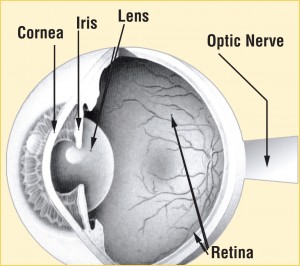 Dr. Michael Wong, a pioneer in minimally invasive cataract surgery, is the distinguished recipient of the New Jersey Inventors Hall of Fame’s Innovator’s Award. This recognition honors lifetime achievement, invention and innovation among outstanding, New Jersey-based scientists, engineers and researchers.
Dr. Michael Wong, a pioneer in minimally invasive cataract surgery, is the distinguished recipient of the New Jersey Inventors Hall of Fame’s Innovator’s Award. This recognition honors lifetime achievement, invention and innovation among outstanding, New Jersey-based scientists, engineers and researchers.
Dr. Wong is the first clinical physician to be honored as an innovator by the New Jersey Inventors Hall of Fame. His surgical procedures to correct cataracts, the most common and treatable form of blindness, reduce the rate of post-operative infection and promote faster healing. The technique he developed, known as the ‘Wong Way,’ is now used world-wide. For three decades Dr. Wong has been in the vanguard in refractive surgery in central New Jersey, introducing radial keratotomy in the 80’s and LASIK surgery in the 90’s. He has also been recognized with the Distinguished Physicians Humanitarian Award by the University Medical Center of Princeton at Plainsboro for charitable work performed locally, as well as overseas in Africa and South America.
The New Jersey Inventors Hall of Fame was established in 1987 to honor individuals and corporations who have made New Jersey ‘The Invention State.’ Previous Innovator Award recipients include Lyman Spitzer, Jr. for distinguished achievements in stellar dynamics, plasma physics, thermonuclear fusion and space astronomy; Frank B. Gilbreth, who pioneered the field of scientific workforce management, positively affecting engineering, education and personnel
procedures; and John von Neumann, who established the mathematical architecture of computer logic and concept of internally stored programs.
Upon being informed of the award, Dr. Wong said, “I am honored to keep company with these distinguished past recipients and the other awardees.”
After winning the award, Dr. Wong was elected to serve as the Selection Committee Chairman for the New Jersey Inventors Hall of Fame, a position he currently holds. He admits, “It’s fun having the opportunity to read all sorts of science and review patents.”
According to an article in The Archives of Ophthalmology, researchers have estimated that 20.5 million Americans over the age of 40 have a cataract in at least one eye, and women are nearly 40 percent more likely to develop them than men.
In the elderly, cataracts are the most common cause of vision loss. Cataracts are the clouding over of the clear, crystalline lens inside the eye. This cloudiness scatters light, reducing contrast and causing glare, especially in bright light or while driving at night.
The common treatment for cataracts involves removing the cloudy lens with ultrasound that liquifies the cataract, and then restoring vision with an intraocular lens transplant.
Dr. Michael Wong has developed a technique to improve the sealing effect for sutureless clear corneal cataract incisions. He creates a supraincisional stromal pocket just before making the clear corneal incision. This pocket is hydrated at the end of the procedure to increase a downward pressure to oppose the upward force of the intraocular pressure. This compresses the clear corneal incision, improving its seal to speed healing and reduces the chance of infection. This ‘no-stitch, minimally invasive technique’ is used world-wide, and has been featured in the most prominent medical journals.
Dr. Wong has contributed his method to a major ophthalmology textbook titled Mastering Refractive IOLs: The Art and Science, edited by David Chang.
Congratulations Dr. Wong!
